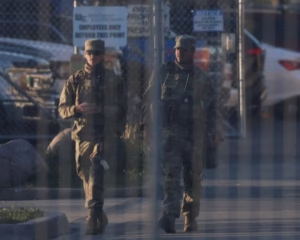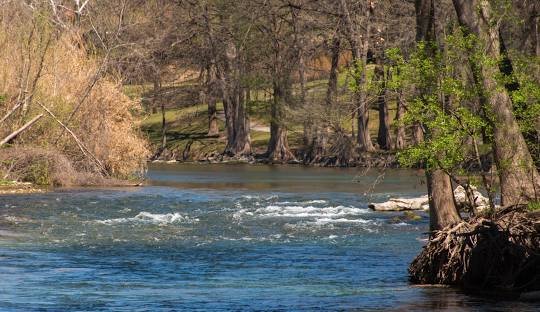The Guadalupe River, stretching approximately 230 miles through Texas, is one of the state’s most iconic natural features. It begins in Kerr County, where the North Fork and South Fork meet near the town of Hunt. From there, the river flows southeast across the Texas Hill Country and empties into San Antonio Bay, part of the Gulf of Mexico. Along its journey, it winds through several counties including Kendall, Comal, Guadalupe, and Gonzales, shaping both the landscape and the lives of the communities it touches.
The Guadalupe River is a popular destination for outdoor enthusiasts. Each year, thousands of visitors flock to its banks for tubing, kayaking, and rafting, particularly near New Braunfels. Fishing is another major attraction. Anglers enjoy catching trout, bass, and catfish in its cool, clear waters. Families, church groups, and campers often spend time along the river, staying at campsites or in rustic cabins. One of the well-known camps along its route is Camp Mystic, a Christian girls’ summer camp in Kerr County.
The river is also home to Guadalupe River State Park, a haven for hikers, swimmers, and birdwatchers. The park protects a stretch of the river and provides educational programs about the local environment. Wildlife is abundant along the river, with native fish, riparian plants, and numerous bird species contributing to the region’s rich biodiversity.
Despite its recreational appeal, the Guadalupe River is also known for its danger. The Texas Hill Country, where the river begins, is characterized by rocky, limestone terrain that does not easily absorb water. When heavy rain falls, especially in short bursts, water rushes quickly into creeks and rivers. This makes the Guadalupe River highly prone to flash floods. Over the years, the river has experienced several deadly flood events. The latest tragedy occurred during the July Fourth weekend of 2025, when torrential rains caused the river to rise by 26 feet in less than an hour. Entire campsites, cabins, and trailers were swept away, resulting in over 100 confirmed deaths and more than 160 people reported missing. The area most affected was around Kerr County, including Camp Mystic.
Flooding is a recurring issue along the river. Its unpredictable nature is exacerbated by changing climate patterns. Scientists say that while no single storm can be directly linked to climate change, rising global temperatures mean warmer air and oceans. These conditions allow more moisture to accumulate, increasing the likelihood of intense rainstorms and sudden floods. According to meteorologist Bob Henson from Yale Climate Connections, the Guadalupe River flood in 2025 is the deadliest inland flooding event in the U.S. since the Big Thompson Canyon disaster in Colorado in 1976.
Urban development along the Guadalupe River has also added to the risk. As more land is paved and cleared for housing, water runoff increases, putting further pressure on the river during storms. Emergency services in Texas continue to face challenges in providing early warnings, especially in remote or unregistered camping areas. During the recent disaster, the lack of communication and tracking systems for temporary visitors significantly slowed down rescue efforts.
Despite these dangers, the Guadalupe River remains an essential part of Texas life. It plays a critical role in agriculture, providing water for irrigation and livestock. Historically, the river was used for milling and transportation. Today, it still holds cultural and spiritual importance, especially among Indigenous communities who have lived along its banks for generations.
Local and state officials are now calling for better flood monitoring systems and stricter zoning regulations near the river. At the same time, conservationists are urging efforts to protect the natural environment of the Guadalupe River, ensuring it remains a source of beauty and sustenance for future generations. As Texas continues to grow and face the realities of extreme weather, the story of the Guadalupe River serves as a reminder of the delicate balance between nature and human activity.







